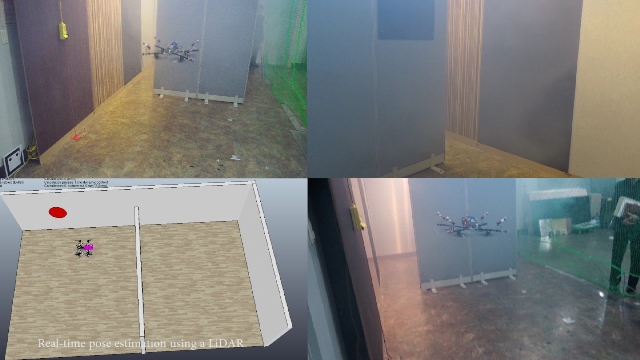Jan 20 2016
A team of researchers from the Korea Advanced Institute of Science and Technology (KAIST) have created a scout drone with the capability to climb walls, in order to fight fires in high-rise buildings, locating the source of the fires as well as finding people trapped inside.
 The Fireproof Aerial RObot System (FAROS) is a wall-climbing scout drone developed to conduct explorations into the site of skyscraper fires. It has an ability to climb walls in smoky, narrow spaces inside buildings.
The Fireproof Aerial RObot System (FAROS) is a wall-climbing scout drone developed to conduct explorations into the site of skyscraper fires. It has an ability to climb walls in smoky, narrow spaces inside buildings.
Tackling fires in high-rise buildings is considered one of the most dangerous disasters. The difficulties faced in skyscraper fires are due to their ability to spread fast in highly-populated spaces and their complex vertical structure During a fire, ease of access to skyscrapers is limited, and it can be hard to evaluate the primary situation.
Professor Hyun Myung, of the Civil and Environmental Engineering Department, headed the research team, which has created the unmanned aerial vehicle or drone, the Fireproof Aerial RObot System (FAROS). This unmanned system can detect fires in high-rises, investigate inside the building, and transfer the data in real-time to the ground station. The FAROS is an extended version of Climbing Aerial RObot System (CAROS) which was developed in 2014 by the same team. The key difference between the two is that the FAROS can also climb walls and fly.
Fireproof Aerial RObot System (FAROS)
The movements of the FAROS rely on a quadrotor system. It can freely move and change its flight mode to resemble a spider crawling on walls, enabling unhindered navigation inside the building on fire, into narrow spaces full of rubble and debris.
With an altimeter, an inertia measurement unit sensor, and a 2D laser scanner, the scout drone can “figure out” its pose to navigate autonomously. Similarly, using the localization result and a thermal-imaging camera to locate people and identify objects within the building, the FAROS is capable of detecting and locating the fire-ignition point with the aid of the dedicated image-processing technology.
The FAROS is flame-retardant and fireproof. Aramid fibers cover the body of the drone to protect its mechanical and electric parts from the direct effects of the fire. The aramid fiber skin provide a buffer of air beneath it, while a Peltier effect based thermoelectric cooling system helps to preserve the specific temperature range of the layer of air.
The team used a smoky indoor environment to show the viability of the localization system and wall-climbing machine. The fireproof test revealed the endurance of the drone when exposed to heat exceeding 1,000°C from butane gas and ethanol aerosol flames for more than a minute.
As cities become more crowded with skyscrapers and super structures, fire incidents in these high-rise buildings are life-threatening massive disasters. The FAROS can be aptly deployed to the disaster site at an early stage of such incidents to minimize the damage and maximize the safety and efficiency of rescue mission.
Professor Hyun Myung, Civil and Environmental Engineering Department, KAIST
The team is working on improving the fireproof design for the exteroceptive sensors - including a thermal-imaging camera and a 2D laser scanner - to provide better performance, as these sensors are likely to be more exposed to fire than the other internal sensors and electric parts.
The KAIST Institute and the KAIST Initiative for Disaster Studies funded this research.